The Butterfly at the Window – September 27, 2019 @goldenoakfarm
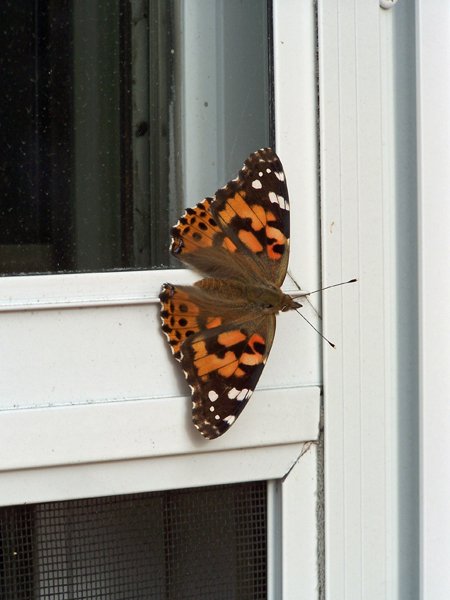
When my helper friend arrived this morning, he looked out the dining room window and saw a butterfly. I grabbed the camera and went outside and discovered it wasn’t sitting with wings folded, as it appeared from inside.
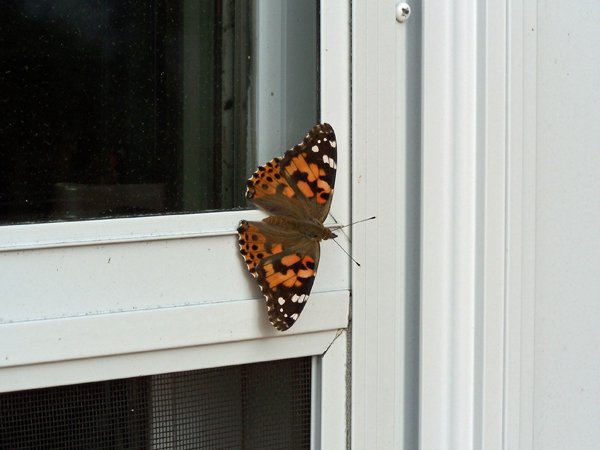
It must have been a cold butterfly, as we had 40’s last night. I thought it might be a moth, as it was so fuzzy, so I looked up orange-black-white moths. I found it under a butterfly listing:
Painted Lady (Vanessa cardui) About 2 inches

The Painted Lady is the most widely distributed butterfly in the world. Venessa cardui inhabits every continent except Australia and Antarctica. It is one of most familiar butterflies of North America
Painted ladies have unusual migration patterns. The Painted Lady is an irruptive migrant, meaning that it migrates independent of any seasonal or geographic patterns. Most overwinter in Mexico
Seen in many different habitats, almost everywhere, especially in open or disturbed areas including gardens, old fields, dunes.
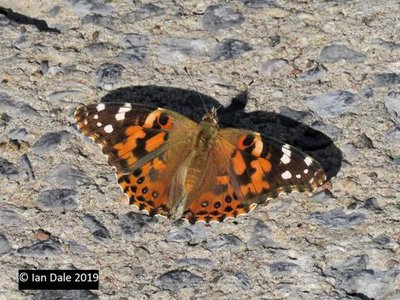
Males patrol hilltops in late afternoon to locate females. Males perch and patrol during the afternoon for receptive females. In the East males perch on bare ground in open areas. Females lay eggs singly on the tops of host plant leaves. Caterpillars live in silk nests and eat leaves. Adults hibernate only in the South and in mild winters.
In spring, Painted Ladies fly low when migrating, usually only 6 to 12 feet above the ground.
Flight is fast and erratic. These medium-sized butterflies can cover a lot of ground, up to 100 miles per day during their migration. A Painted Lady is capable of reaching a speed of nearly 30 miles per hour. Painted Ladies reach northern areas well ahead of some of their more famous migrating cousins, like monarch butterflies. And because they get such an early start to their spring travel, migrating Painted Ladies are able to feed on spring annuals, like fiddlenecks (Amsinckia).
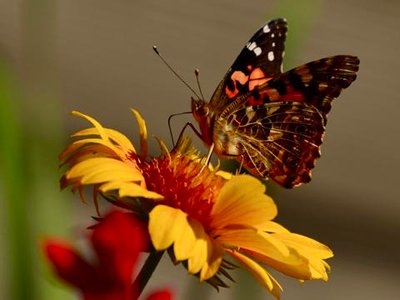
Larval foodplants: thistle, hollyhock and mallow, legumes, and many others, many of which are in the composite family
The Painted Lady adults prefers nectar from composites 3-6 feet high, especially thistles; also aster, cosmos, blazing star, ironweed, and joe-pye weed. Flowers from other families that are visited include red clover, buttonbush, privet, and milkweeds.
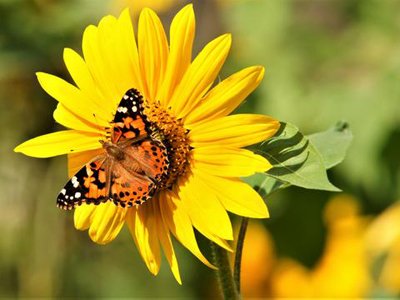
Browny orange, black, with white spots
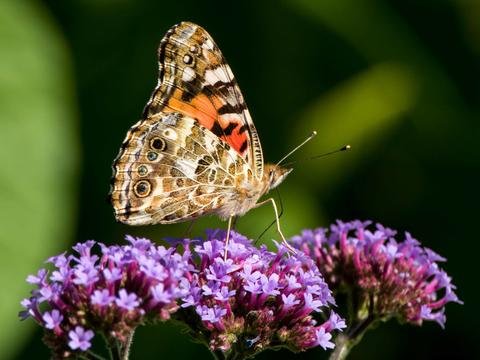
Below: hindwing has row of four small eyespots
Above – hindwing has row of black spots; wing tips dark with white spots
I have mallows here and grow artichokes usually, a thistle. There have also been a lot of thistles coming up in the veg gardens that were abandoned this year. So it had plenty of food for caterpillars. Of the 10 listed for adults I have 5.
So I learned a lot about this butterfly that I’ve probably seen often before thanks to the sites listed below.
Source: https://tucsonbotanical.org/desertconnections/common_butterflies.php
https://www.butterfliesandmoths.org/species/Vanessa-cardui
https://www.thoughtco.com/facts-about-painted-lady-butterflies-1968172